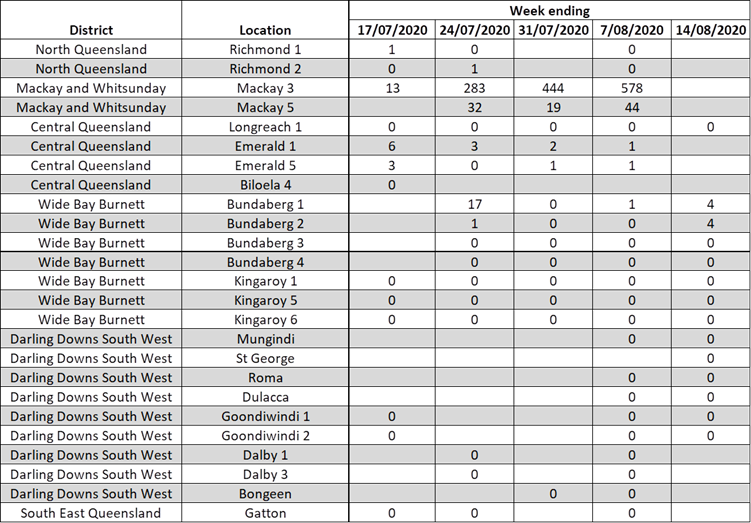Fall armyworm (FAW, Spodoptera frugiperda) is an exotic pest that was first detected on the Australian mainland in February 2020. State and federal biosecurity organisations have determined it to be unfeasible to eradicate this pest and it is now classified as endemic.
In response to this incursion, the Queensland Government has funded a network of traps to better understand the potential range of FAW in Queensland and how it might impact our cropping and grassland systems. Currently there are 25 traps set up across Northern, Central and Southern Queensland, this number will increase to over 50 to capture the grasslands in Western and Northern Queensland. In addition to the trapping network, staff at the Queensland Department of Agriculture and Fisheries (DAF) will be conducting research to understand the pest status of this insect within our production systems with the aim of identifying and developing a range of sustainable practices (cultural, biological and chemical) to enable effective control.
FAW trapping commenced in late February. Trapping data during late summer and autumn indicated a gradual migration of the insect in primarily a southern direction. Throughout winter, low levels of FAW moths were detected in the Richmond, Longreach, Emerald and Bundaberg traps, but no larval populations were witnessed. Over the last few weeks, large numbers of moths have been detected in Mackay as well as above threshold larval populations.
It is important to note that the primary function of pheromone traps is not to provide definitive counts, but to act as an ‘early warning’ for potential egg lays of FAW. In-crop sampling is required to accurately assess the presence of eggs and larvae.
Insecticide resistance has been a feature of FAW infestations with almost complete failure of all options in Brazil causing significant management issues. Insecticide resistance management of this pest, and the consideration of how its management will impact on resistance development in Helicoverpa armigera and other species should be kept in mind.
Table 1: Latest fall armyworm pheromone trap counts in Queensland. Numbers in the table are standardised counts for seven trap nights, calculated as (total moths caught/trap nights) x 7.
For further information on FAW and moth trapping data visit the Beatsheet’s fall armyworm page.
This trapping network is funded by the Queensland Government and would not be possible without our network of trap operators.

